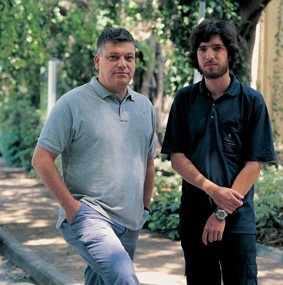The scientists of the Weizmann Institute of Science recently developed a unique method, which makes it possible to understand how the brain performs the task of regulating its own activity, thereby increasing its control over its own activity

Every parent knows the dilemma: should you give the child the reins and encourage him for personal development, or closely monitor his actions? The delicate balance between independent activity and supervision and control is difficult to achieve, but the human brain actually maintains it easily, and manages to accurately regulate its own activity.
Scientists at the Weizmann Institute of Science have recently developed a unique method, which makes it possible to understand how the brain performs this complex task, thus increasing its control over its own activity. The brain contains about 100 billion branched cells called neurons, which transmit electrical signals. These signals encode the information that allows the brain to schedule all the activities that take place in it, and in fact to manage all the behavior of humans and animals. To transmit the stimulus to the neighboring nerve cells, the nerve signal has to cross the narrow gap between the cells (called the synaptic gap).
This process is carried out in several stages. In the first stage, following signals reaching the cell from other neurons, its electrical potential crosses a certain threshold value, and as a result it "fires" an electrical signal, which causes the release of various substances from the cell. These substances - called "neurotransmitters" - cross the space between the cells, and are picked up by special receptors located on the wall of the adjacent neuron, thus transmitting the nerve message to it. Since the neural network includes countless connections between neurons and many feedback circuits, the electrical activity may develop rapidly and cause non-stop "firing", which manifests itself in phenomena such as hallucinations or convulsive attacks - such as those occurring in epilepsy. Therefore, restraining the "transmission" of the nerve signal is an important step in correct communication between nerve cells. That is why inhibitory cells exist, which send signals that reduce the electrical potential of nerve cells, and prevent the uncontrolled "firing" of nerve cells following stimuli.
The question that occupied many scientists concerned the timing of the initiation of the inhibitory signals: are they sent randomly, or are they coordinated in some way with the excitatory signals. The great obstacle they faced was the enormous complexity of the events leading to the transmission of each signal - the electrical potential of the nerve cell is the result of many combinations between excitatory and inhibitory signals, so that it is practically impossible to determine the contribution and timing of a particular single signal. A new experimental method, recently developed by Dr. Ilan Lampel and the researcher
Postdoctoral fellow Dr. Michael Okon, from the Department of Neurobiology at the Weizmann Institute of Science, may solve the difficulty. In one of his previous studies, Dr. Lampel inserted tiny electrodes into nerve cells, and was able to measure, at the same time, the electrical potential of pairs of neurons. This is how he was able to show that the electrical potential of adjacent nerve cells is actually very similar, so that it can be concluded that the cells receive similar combinations of signals from the network of nerve cells that surrounds them. Based on these findings, the scientists assumed that if they examine a pair of adjacent nerve cells, and pass the electric current through them using the tiny electrodes, they will be able to measure separately - at the same time - the start of excitation in one cell, and the start of inhibition in the other cell. In this way, it will be possible to precisely determine the timing of the two events, and check the correlation between them.

In this way, the researchers measured the electrical activity of pairs of nerve cells located in a certain area in the cerebral cortex of rats - to which sensory information arrives from the animal's whiskers. The measurements were carried out both during spontaneous activity of the nerve cells, that is, in the absence of external sensory stimulation, and during sensory stimulation. Because the researchers were measuring the activity of neurons in the cerebral cortex that processes signals from the rat's whiskers, the sensory stimulus was induced in this experiment by moving the whiskers. The researchers discovered that in both cases the inhibitory signals were largely timed with the excitatory signals - lagging behind them only by a few thousandths of a second.
The signals were coordinated not only in terms of the timing of their occurrence, but also in their magnitude - the stronger the excitatory neurons together sent a stronger signal, the greater the strength of the signal originating from the inhibitory cells. These findings, recently published in the journal Nature Neuroscience, provide the first direct evidence that excitatory and inhibitory signals in the brain are continuously and precisely coordinated.
Dr. Lampel: "These findings can shed light on an unsolved mystery - whether an imbalance between excitatory and inhibitory signals may explain some of the causes of the occurrence of certain neurological disorders. Solving the mystery will perhaps, in the future, make it possible to use the information obtained to plan and develop medicines that will restore the balance that has been violated."
